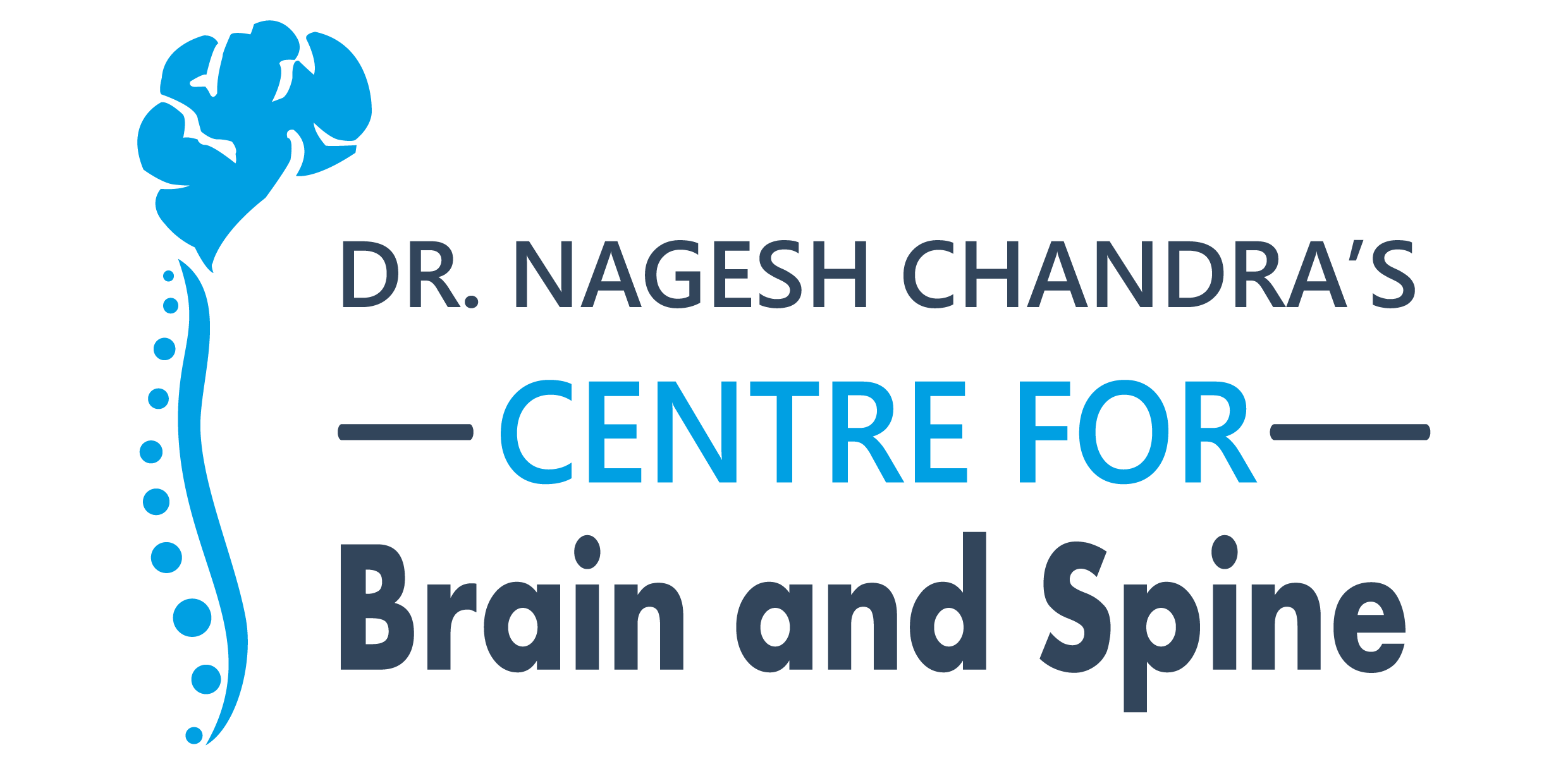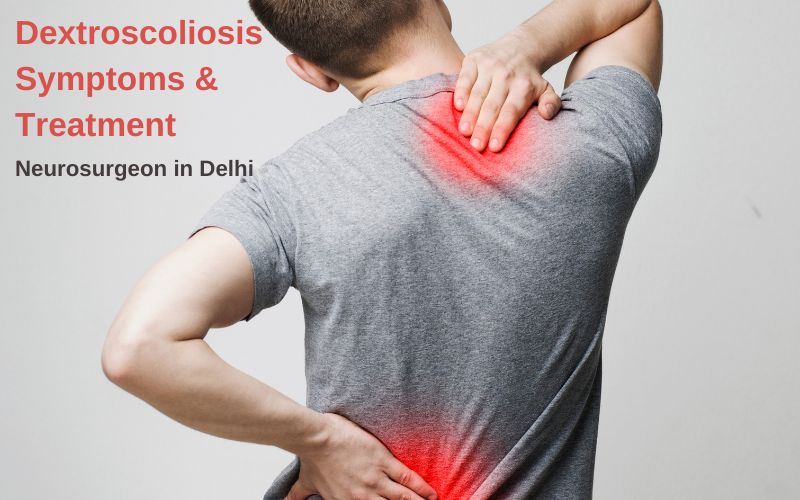Dextroscoliosis is a spine condition causing it to curve abnormally to the right. This deviation from the spine’s natural alignment causes challenges in movement and activities. In this detailed guide by Dr. Nagesh Chandra, who is known as a renowned neuro spine specialist in Delhi, Dextroscoliosis is discussed with its causes, symptoms, and treatment in India, specifically Delhi at his center called Centre for Brain and Spine.
Dextroscoliosis in Spine
The root causes of dextroscoliosis vary, but it stems from imbalances in the muscles and ligaments supporting the spine. This abnormal curvature develops during growth push in adolescence or due to congenital factors. In some cases, it is also a result of neuromuscular conditions such as cerebral palsy or muscular dystrophy.
Symptoms of Dextroscoliosis
Its symptoms are not visible until the curvature becomes severe. Common signs include uneven shoulder heights, an asymmetrical waistline, and an apparent lean or tilt to one side. Patients also experience back pain, muscle spasms, and fatigue, especially after prolonged periods of standing or sitting. The signs that are helpful in Identifying Dextroscoliosis are as follows:
- Uneven Shoulder Heights: A main sign of dextroscoliosis is the noticeable discrepancy in shoulder heights. The rightward curvature of the spine causes one shoulder to appear higher than the other, disrupting the symmetry of the upper body.
- Asymmetrical Waistline: Dextroscoliosis induces a visible asymmetry in the waistline. This deviation results from the spine’s abnormal curvature, causing one side of the torso to appear more uneven.
- Leaning or Tilted Posture: People adopt a characteristic lean or tilt to one side while standing or sitting. This is a consequence of the spine’s attempt to compensate for the curvature, leading to misalignment.
- Back Pain and Discomfort: Patients experience persistent back pain. It ranges from mild to severe and intensifies during activities that cause strain on the spine, such as prolonged standing or sitting.
- Muscle Spasms: Muscle spasms are a common symptoms of dextroscoliosis. The imbalances in muscle and ligament tension resulting from the spinal curvature trigger contractions, leading to stiffness.
- Fatigue: Patients with dextroscoliosis report increased fatigue, especially after engaging in activities that demand prolonged physical effort.
When to consult your nearest spine doctor?
Here are some situations that are signs of an immediate need to visit to the top spine doctor in Delhi or in your area like Centre for Brain and Spine in Dwarka:
- Visible Signs of Asymmetry: If you observe uneven shoulder heights, an asymmetrical waistline, or a noticeable lean or tilt to one side, seek medical attention.
- Persistent Back Pain: Chronic or persistent back pain, especially if accompanied by other symptoms.
- Changes in Posture: Any noticeable changes in posture along with pain, should be discussed with a spine doctor.
- Screening for Adolescents: Adolescents undergo routine scoliosis screenings at school. If a screening indicates a potential issue, consult now
How is Dextroscoliosis diagnosed?
Following test examinations are performed for identification and diagnosis of this spinal condition:
Clinical Examination:
- Visual Inspection of the Spine: Doctors visually inspect the spine for lateral curvature. Dextroscoliosis has a rightward deviation from the spine’s natural alignment. The lateral curve is examined to gauge its severity and impact.
- Asymmetry and Uneven Shoulder Heights: A critical visual sign is the presence of asymmetry, particularly in shoulder heights.
Laboratory test for dextroscoliosis:
- Spine X-rays – Cobb Angle Measurement: X-rays serve as a main test tool in diagnosing dextroscoliosis, capturing detailed images that allow for measurements. The Cobb angle, a specific measurement derived from X-ray images, quantifies the degree of lateral curvature. A Cobb angle exceeding 10 degrees is indicative of scoliosis, with higher angles signaling increased severity. The severity of dextroscoliosis is often categorized based on the degree of the Cobb angle:
- Mild Dextroscoliosis: Cobb angle between 10 and 25 degrees.
- Moderate Dextroscoliosis: Cobb angle between 25 and 40 degrees.
- Severe Dextroscoliosis: Cobb angle exceeding 40 degrees.
- Assessing Lumbar and Thoracic Curves: Dextroscoliosis involves both lumbar and thoracic regions. Radiographic evaluation helps to test more beyond the Cobb angle to assess the specific curves in these spinal segments.
- Magnetic Resonance Imaging (MRI) and (Computed Tomography) Spine CT Scans in Dwarka: In complex cases, or to assess the impact on surrounding structures, MRI and CT scans provide additional insights. MRI reveals soft tissue details, highlighting potential nerve or disc involvement, while CT scans give detailed bone structures.
Dextroscoliosis Treatment in Delhi
Dr. Nagesh has explained the following treatment options for Dextroscoliosis:
Dextroscoliosis treatment without surgery
- Physical Therapy: Targeted exercises improve muscle strength and flexibility, and better spine alignment.
- Bracing: In cases where the curvature is still developing, braces are recommended to slow down its progression.
- Pain Management: Pain relievers and prescribed medicines to get relief from pain associated with dextroscoliosis.
Dextroscoliosis Surgery in Delhi
Surgery for dextroscoliosis is prescribed when the curvature of the spine reaches a degree of severity and non surgery treatments prove ineffective in stopping its progression. The decision for surgery is influenced by factors such as the degree of curvature (measured by the Cobb angle), the presence of symptoms, and the individual’s overall health. The detailed factors are discussed below:
- Severe Cobb Angle: Surgery is considered when the Cobb angle exceeds 40 degrees or if the curvature continues to progress with even ongoing treatment.
- Symptoms and Discomfort: Persistent symptoms, such as severe back pain, respiratory issues, or neurological symptoms, prompt the need for urgent surgery.
- Impaired Functionality: If dextroscoliosis impairs a person’s ability to perform daily activities, surgery is recommended to improve functionality.
- Cosmetic Concerns: In cases where the spinal deformity has a impact on appearance and causes emotional distress
Two common types of surgical procedures for dextroscoliosis are spinal fusion and instrumentation.
Spinal Fusion surgery
Spinal fusion is a surgery procedure involves Qjoining two or more vertebrae together to limit movement between them. This is done to stabilize and reduce the curvature of the spine.
During spinal fusion for dextroscoliosis, the neurosurgeon uses bone grafts or bone substitutes to make the vertebrae to fuse together. This limits the motion in the affected area of the spine and corrects the abnormal curvature.
In some cases, instrumentation such as rods, screws, or hooks are used for additional stability during the fusion process.
Spine Instrumentation Surgery
Instrumentation involves the use of specialized devices such as rods, screws, or hooks to support the spine and maintain proper alignment. This is often combined with spinal fusion.
The neurosurgeon attaches instruments to the spine to correct and stabilise the curvature. It helps maintain proper spinal alignment while the bone grafts or substitutes promote fusion between the vertebrae.
Types of Instrumentation:
- Rods and Screws: Commonly used to straighten and stabilize the spine.
- Hooks: Attached to the spine to provide additional support.
Dextroscoliosis is a complex spinal condition and a higher stage of scoliosis. The best way to avoid it is to consult doctor initially when you experience symptoms of scoliosis only and stop the curvature there only.
People on deskjobs, students with phone addiction and study schedules should consult a spine doctor regularly to prevent such issues. If you have been recommended a spine surgery due to any of the problems, you can take a second opinion from top neurosurgeon in Delhi, Dr. Nagesh Chandra

